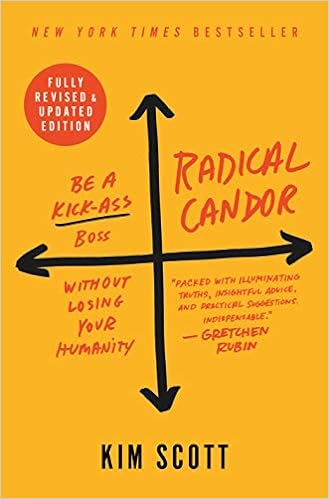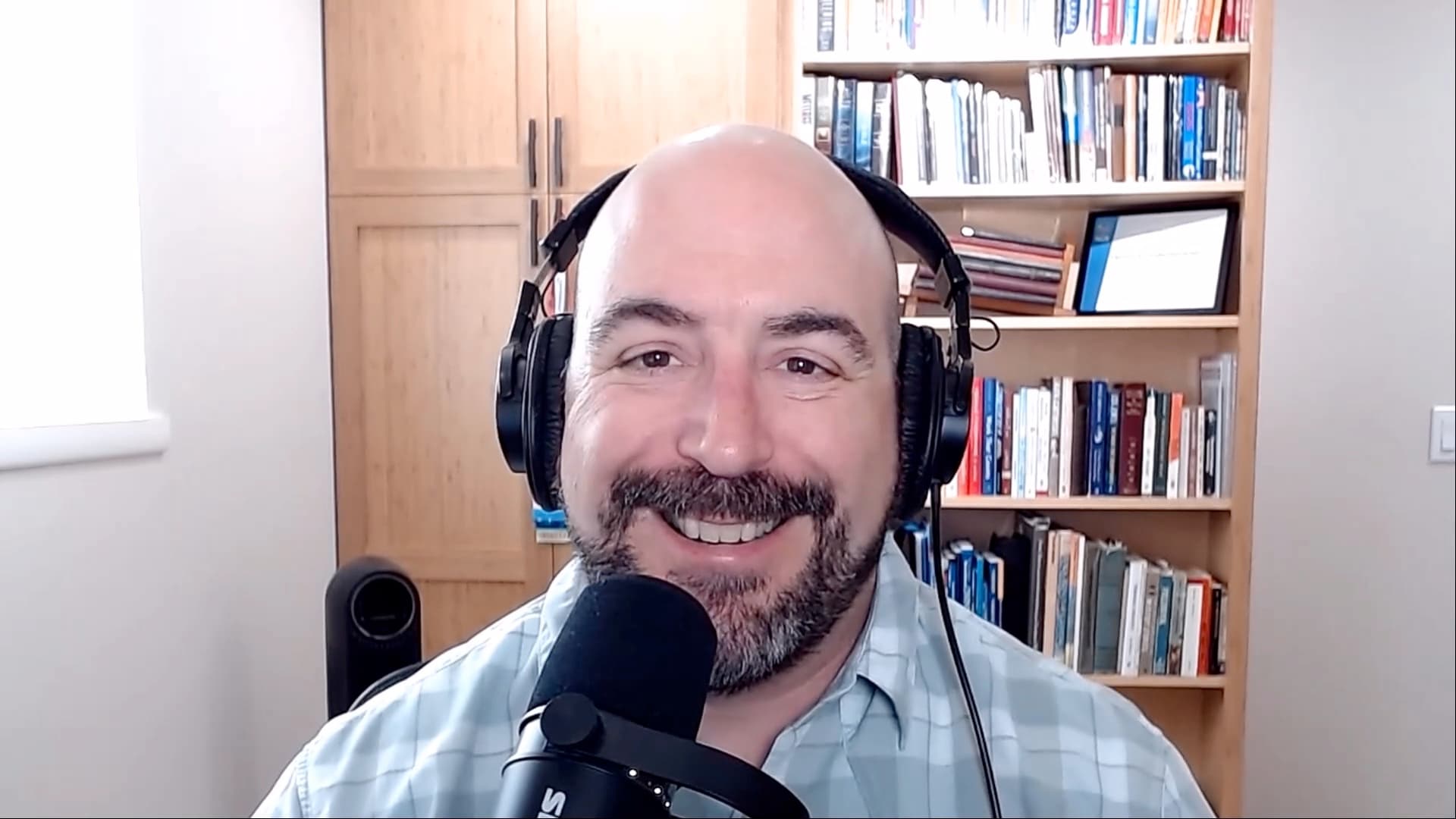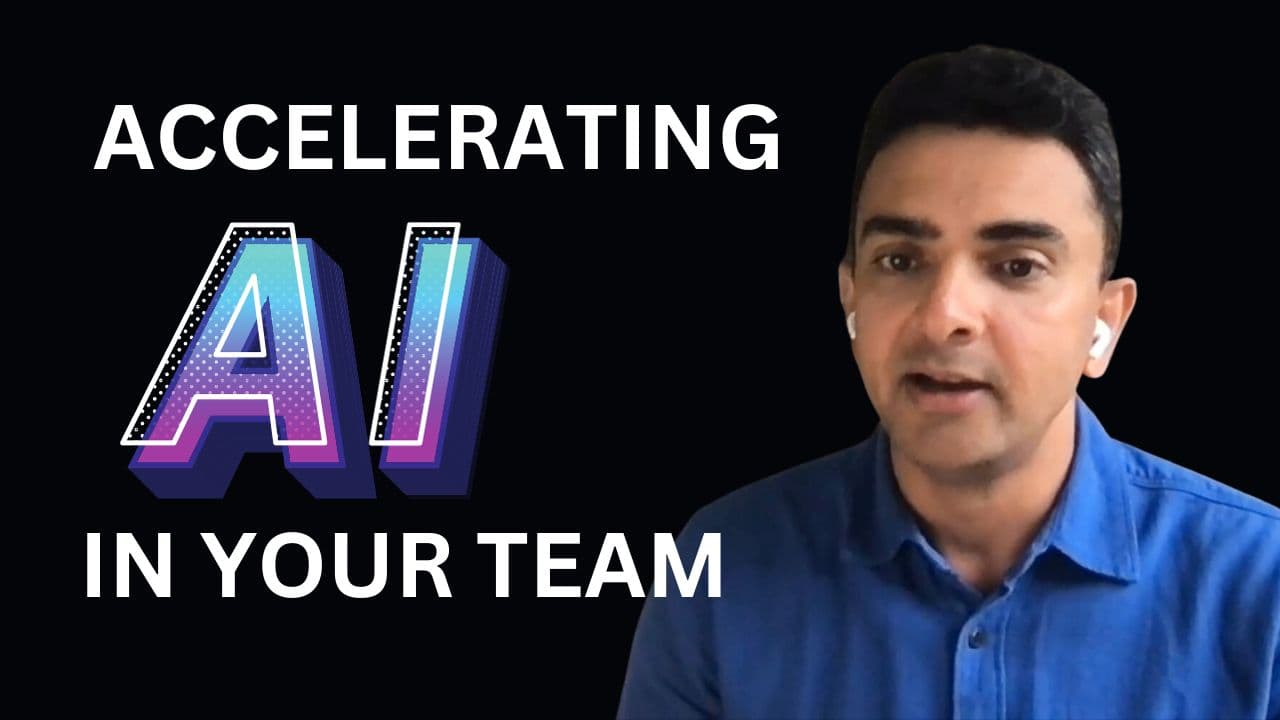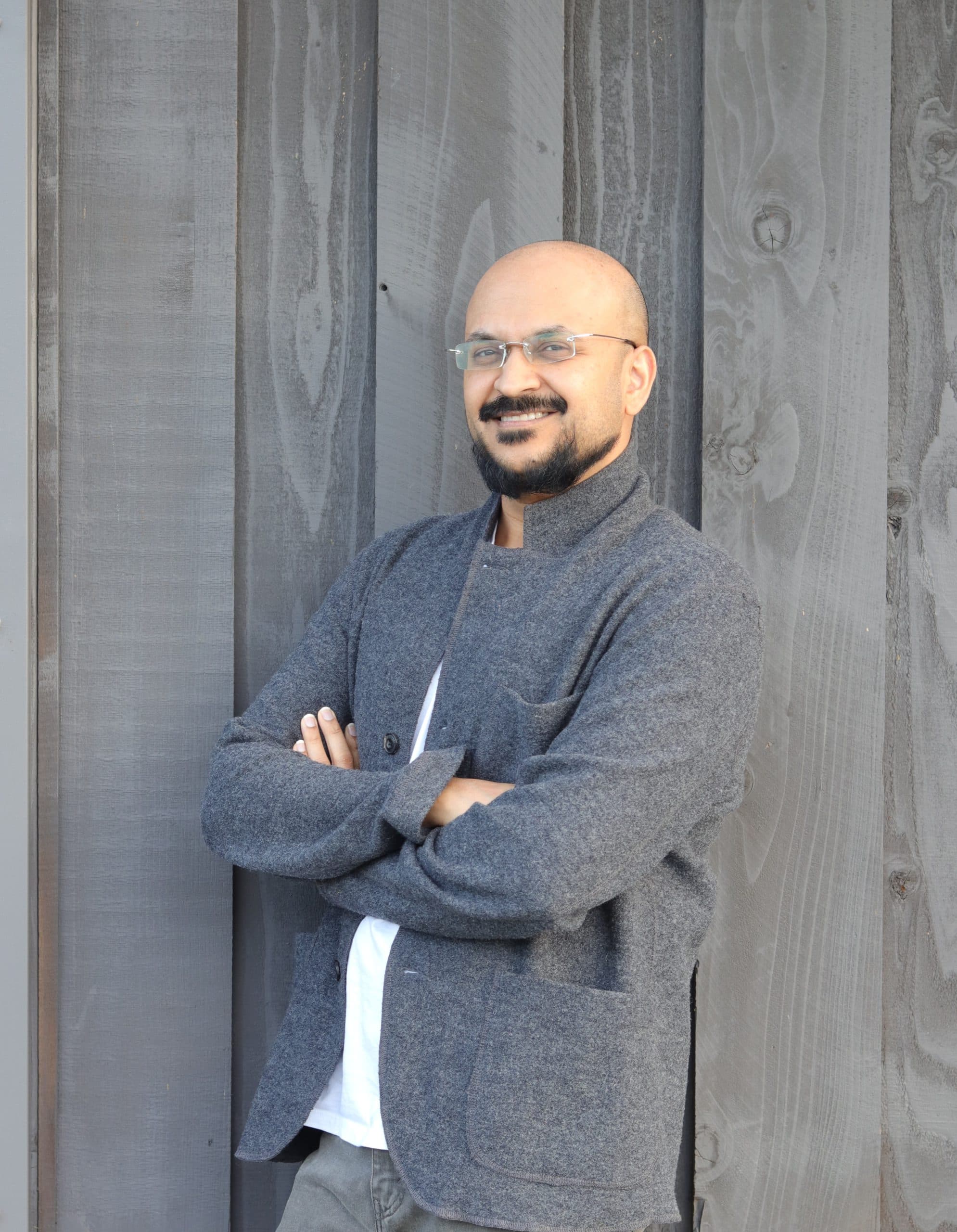Interview with Lavanya Ramani, Software Development Manager at Amazon
Published on Feb 10, 2020
21 min read


Vidal: Well, today, I have Lavanya Ramani with me. Lavanya, thank you for joining ManagersClub today.
Lavanya: Thank you, Vidal, this is a great opportunity. I appreciate this.
What’s your background and how did you get into management?
Vidal: Maybe we could start a little bit, tell us about your background, maybe what you do now, how you got into management. Tell us a little bit about yourself?
Lavanya: Sure. I graduated from India after completing my engineering from computer science in one of the reputed colleges in India. I joined as a software engineer in a services company and, after a quarter, realized that I wanted to work for a product company. So I moved from the services to a networking product company and continued to work there for about three and a half / four years. Later, I moved here and continued with the same company, which was headquartered in the Bay Area, and continued to grow from an individual contributor to a manager.
Lavanya: So it was a great journey, the road to management, because I started understanding that I appreciate it when there’s a team around, and I’m able to bring out my best and think that I’m able to perform at my optimal best only when I’m around my team. That kind of made me think about whether I should move into management. But it was one such opportunity, which I wanted to pick up, where I could start with a small team. When I started working with a small team of about four engineers and delivered a particular feature for a particular product, we understood that it’s a great feeling to be within the team and it’s very rewarding when you see what a team can accomplish, by you being able to course-correct actions, tell what’s working, what’s not working well, and how you’re dedicating your time in a day to help people grow and the finding people, their blind spots in the team.
Lavanya: So those are the things which made me think, let me move to management, and I ended up in management, right. Today, I’m an engineering manager at Amazon, and that’s been a great journey so far. So, that’s where I stand.
Vidal: Nice. Could you say a little bit more, maybe like how you transitioned into management? So you applied to be a manager, or you were selected or asked by your boss, or how did that happen?
Lavanya: Certainly, so at one point in my career, I had an opportunity. It was about four years ago. I had an opportunity to either go into technical leadership as an individual contributor or try to take management. And my director came and said to me that Lavanya, “can do well in both, but I personally feel that as a person who likes to work with a team, it would be awesome if you want to try the management part”.
Lavanya: And I said, “certainly, that’s what is running in my mind as well. Why don’t I try management?”. So he said, “yes, certainly. But you won’t be starting with a big team, try to manage four people who are not going to be reporting to you to start with, but you deliver a project with them, thinking that you are their manager”. And these four people had varied experience levels. One of the engineers had over 25 years of experience in the industry. Another was a new hire from college, and I had mid experience in the industry with two more people. It was four people with varied experience, with varied knowledge, age. It was amazing learning how to lead a team, being that mentor, being the guide, being that leader, yet not actively managing them.
Lavanya: So with that, I understood that we could deliver a project when everybody’s coming in together and putting the best, trying to unblock each other and trying to do something which is towards the larger goal for better products. So if this happened and after a quarter, I went to the director again, and they said, “certainly, I want to become their manager.” And he said, yeah. And then he spoke to these four individuals, and they were all okay to report to me. And then, I grew the team from four to 12 and then to 15 and started to deliver projects with that. So, that was a transition. So it was initially the first six months, it was all about understanding what the tips and tricks of managing a small team are. How can you hire by managing a small team and once you have a consistent number around 12 or 13, how are you going to keep the team happy with the quality of good projects that are going to come in, quality of work that they are doing and manage the technical debt at the same time?
Lavanya: So yeah, so that was the whole move to management and the learning from that. It’s been four years ever since I’ve been a manager.
What are the biggest challenges you face?
Vidal: That’s great. That’s fantastic how you transitioned. What are the biggest challenges that you face as a manager?
Lavanya: That’s a great question, Vidal. There are many challenges that the manager faces. The biggest challenge that I face is to find the balance between retaining the top talent, with extremely good technology, forward-looking features for the product, and managing the technical debt in the team. This is one of the biggest challenges that I always have faced, but a manager has to find that right balance of getting those roadmap items ahead, how to get the top talent to work on the roadmap items, how to motivate the team to believe that they are working towards a great product that’s going to be used by millions and billions of people around the globe. At the same time, manage the technical debt because coming from the background as an engineering manager, it is very easy just to accumulate the technical debt, and nobody’s looking at it.
Lavanya: However, the challenge there is to find that balance where the technical debt is also being managed and by technical debt, I mean, all the processes or all the technical designs or the operations that we have done so far, which is kind of coinciding or how could we run in parallel with the forward-looking features. So as we try to complete one feature and go to the next one, how are you going to find then the balance to still retain the feature, maintain that feature, the feature that you released? Add these little bit more features, mini-features on top of it, yet look for something which is longterm. And to keep the team motivated to do both.
Vidal: That’s great. You know, with regard to tech debt, I think it’s something that a lot of managers have to deal with. So do you have a thing where maybe you allocate a certain percentage of your capacity to tech debt or you just try to address the tech debt as you go feature by feature?
Lavanya: We actually do about a 25 to 30% in any company. If you, if you just take any company, it’s usually 35 to 40 or it varies between 25 to 40% to address tech debt and the 50% or the 60% of the work comes from the forward-looking features which are the shiny or the newer aspects of the technology.
Could you share with us a lesson you learned as an engineering leader?
Vidal: Okay. That makes sense. Yeah. I think a lot of people do that. Could you share with us a lesson you’ve learned as an engineering leader?
Lavanya: This is a great question. One of the lessons that I have learned is to show a “detached attachment.” It’s a great term that I learned from my mentor that as an engineering leader or as a leader, one of the things that you have to do or you have start showing is attachment towards your team, the product, the quality of the product or the quality towards making your team deliver better or be very highly productive. At the same time, be detached about it. So, this is a great lesson that I have learned that do not get emotionally attached, but at the same time think objectively, try to make the right objective decisions. Do not try to take hasty or fast decisions. Always take a step back, look at the bigger picture.
Lavanya: Try to control the emotions with respect to, “Oh, what’s going to happen if this doesn’t work in your way or what’s going to happen if this person leaves the team or what’s going to happen is the project gets deprioritized”. All these, take a step back. Get a bigger picture. Try to detach your emotion towards it, think objectively and think towards something which is more meaningful. Something which is more long term, something which is more complete, something which is towards an end goal which is going to satisfy most of the conditions that are going to make your team, the company, the product better. So, that’s one of the beautiful lessons that I have learned from my journey so far, being an engineering manager.
Vidal: Oh, I think that’s fantastic. So basically, you’re saying to step back to get perspective. That’s great.
What’s your approach to hiring?
Vidal: Could you share what is your approach to hiring?
Lavanya: Certainly, yes. Hiring is an important day to day activity that an engineering manager follows in any team. And like everyone, I use LinkedIn. One of the important pieces in LinkedIn is to say vocally and advertise that you are hiring. And the way you can say that is when somebody sees a LinkedIn profile on the job description, you can say, “I’m hiring for so and so engineers, with these many years of experience.” And this can attract a lot of candidates to send you LinkedIn requests. And you can look at their profiles and their resumes and bring them all for interviews. The other aspect of LinkedIn, which not many engineering managers may follow, is something called LinkedIn Recruiter account. This is an account that most recruiters on LinkedIn have, because a LinkedIn Recruiter account enables you to understand who in the market is actually looking out to jump from their present position.
Lavanya: So when you can send an email out to those individuals, it becomes a lot more personalized that they can see it is coming from an engineering manager who’s looking for an opportunity that he’s presenting to me and I want to come and join that engineering manager’s team. So the LinkedIn Recruiter account is a supremely useful tool that has helped me a lot in hiring because we can send emails up to 1000 people at the same time. And knowing their background and the current years of experience, when did they graduate, where did they graduate from, what does their present profile looking like, and get those filtered out and then send them a very personalized email, which is coming directly from an engineering manager. So a candidate is more likely to respond with an accept, that they’re accepting a conversation to continue, and second the time taken to respond to an invitation coming out of an engineering manager is much less compared to a recruiter. So this is a super useful tool, and I recommended to every engineering manager to use it. That’s my approach to hiring and with this tool, which can help everyone.
Vidal: LinkedIn obviously is a fantastic tool. So that’s great. And I think that beginning, I’m glad you mentioned that. So a lot of engineering managers they’ll put in the title, right, like engineering manager, wherever, I’m hiring, etc, etc. So that’s kind of what you’re saying. Put that in your own profile that you’re hiring!
Lavanya: Yes, I’m using LinkedIn Recruiter account, both these two things and tools can help us. Yes.
What’s your advice for managers who are just starting out?
Vidal: What would be your advice for managers, new managers who are just starting out?
Lavanya: That’s again a very good question. One of the pieces of advice that I’ll give to the new managers is taking life easy and take your career easy as it is not a linear journey. This is something that I learned as well. But when I thought it’s very easy. Oh, I’ll become a manager in two years. I’ll become a Senior Engineering Manager. Then in two years, I can become a Director in two years, I can become a Senior Director in two years then I can become a VP followed by an SVP. I become a C-Suite, no,
Vidal: If it was just that easy!
Lavanya: If it was just that easy, right? A career is a nonlinear journey, and it’s not a race. It’s not a race where 100 people are running, and you’re trying to get over others. It’s a journey. It’s a race that you have for yourself and running on your own track. It is not shared with anyone else, and everybody’s running their own races, so there’s no winner at the end of it.
Lavanya: And for people who think, who just look at somebody else, who to maybe feel better than them or feel better when somebody not as great as them is, perhaps the wrong way to look at your career. Your career is unique. It is balanced in every way when you think about it. It’s a journey that you want to enjoy, not look at end result all the time because if you look at the end result, you’re going to miss out on the beautiful moments that you’re going to leave out in this journey and just perhaps never lead to that end result, which you know, will happen because it’s not a linear progression of the end of the day. So it’s a journey there. It’s not a race. It’s an overall journey that you want to enjoy and not look at the end result all the time. So this is the advice I would give to all the people who are starting out. Take it easy, learn and enjoy the journey as you move forward.
What’s your workday like and how do you manage your time, emails, etc.?
Vidal: I think that’s a very wise and enlightened approach. So that’s really good. All right, moving on to day-to-day manager life. What’s your workday like? How do you manage your time, calendars, email, all the things you have to do?
Lavanya: Yeah, so this was actually… if I think of Monday to Friday. You start on a Monday? It’s pretty much because I have a family with, I have two kids, I have to drop them to school, and my husband helps me here. The day starts at actually 07:00, 06:45, or 06:30. You get up; you pack the lunch for kids. My husband drops the kids to school, he goes to his work, and I end up at work at about 08:30 ish or 09:00 and the first thing to do is to check the emails, check the latest instant messages that you have.
Lavanya: And the day starts with making sure that you have your most important stand-ups in the earlier part of the day. If you have stand-ups around your present project, Stand-ups around previous maintenance projects that you have or any of the important technical decisions. In the first half of the day, because then engineers will get their time to work on the second half of the day. That is in the second half of the day is mostly about one-on-ones, making sure that I’m able to catch up with other management related meetings, whether it is hiring or whether it is the roadmap discussions that we have or whether it is trying to get the team for a team meeting or a biweekly sync up that we have across the org. So all that comes as part of the second half of the day.
Lavanya: One of the things that I do usually is if you have a half an hour gap between two meetings, I try to push the other meeting not to have this fragmented calendar. Because fragmented calendars are hard to do anything because you’ll go into a meeting. You’ll attend that meeting; you come out, you get half an hour, out of which 25 minutes is pretty much what you have because five minutes you have to pretty much run to the meeting room and so on. Attend the next meeting for the next half an hour. So I try to avoid fragmented calendars as much as possible. Try to push the technical discussions and meetings and stand-ups to the first of the day, and the second half of the day is pretty much the meetings with the team on that one-on-one discussions, or excuse me, on any of the roadmap or discussions that we have. I have to leave at five because I have to go pick up my kids and then cook some food and so on. And the day ends with that.
Lavanya: So I usually do not work after eight-ish or nine because it’s important that everybody sleeps well. You get a good night’s sleep, and you are rejuvenated the next day. Company emails. I have good ways to divide the emails into different folders like anyone would do because it’s important that you have a good way to separate your emails. The emails which are important emails which are to me, emails that I’m CC’d, emails to larger groups. You have these folder settings in the emails. So that the right emails go into the right folder, and you’re able to look at that mail as and when you get them.
Lavanya: So that’s usually how I manage my emails, and I have the meetings around. I’m also working towards a policy for no meeting dates for my team. This has worked in the past pretty much. Half of the team feels it’s not a great thing to not have meetings at all in a day. That is half of the team sees it. Very subjective, and we would like to have meetings in a day. So, that’s one other idea that we are trying to see whether we can have a meeting-free day in a week. This how I manage my meetings on my calendar.
Vidal: That’s great. Yeah. You listed a lot of things there. Yeah, I’m actually putting together an ebook on time management for engineering managers, and these things are really good. I also like to defrag my calendar because, like you say, with those little 25 minutes, what can you really do some times.
Lavanya: Yeah.
What’s a personal habit that contributes to your success?
Vidal: That’s great. What’s a personal habit that contributes to your success?
Lavanya: That’s a great question because if you look at all the leaders, whether it’s top CEOs of the company, they have their own personal habit, which contributes to their success, and it’s a very relevant question. One of the personal habits that I follow is to not look at my phone at work, which is not look at any of WhatsApp messages, any of emails, any of the social media content on my phone between my work hours, including lunch. So I set the notifications in a way, such that they don’t pop up on my phone, number one. And second, I set my ringtone to a full volume so that only important calls I’m able to pick. Otherwise, I do not look at my phone. Including office emails. Many people, many engineering managers, or many of us will look at the phone, including emails, and they are having a one-on-one chat. If you get this ten minutes off of those one on one chat we immediately start looking at our phone.
Lavanya: The other thing that we do is when we are eating lunch, and we look at our phone to catch up with some technology news or some social media news or something at work, this disrupts the face to face communication that you can have with your team. So not looking at your phone totally really helps. And however, you do not want to miss important calls that might come to you. You still want to set it up the ringtone to full volume, but disable all of the notifications of other apps. And this has helped me. For example, I still remember during lunchtime about six or seven months back, I used to be looking at my phone to catch up with some technology news. And after that, I realized, “Oh, I’m not collaborating with my team enough.”
Lavanya: Then I started having one-on-one lunches with my team. And that was more personalized because I could talk not just about work with my colleagues or with my peer or my direct report, but it’s to know more of them. Get to know about what they do on weekends, where they travel for vacation, what are their likes and dislikes, what hobbies do they have? So that helped, and that’s changed then the relationship at the workplace. So that personal habit that I follow is not to look at the phone at all, totally 9:00 AM to 6:00 PM.
Vidal: Wow, you’re incredibly disciplined. That’s great. Because yeah, phones can be such a distraction.
Lavanya: Yeah. I wasn’t like that, Vidal, to be honest, right. It takes time, and it takes a lot of effort, constant effort. You have to be purposeful. You have to have other purposes at work, a bigger purpose than just looking at your phone. Yeah. It takes a lot of effort. Yeah.
Vidal: So you’re doing it because you wanted me to be present, it sounds like, when you’re having lunch or with anyone else and not distracted.
Lavanya: And not just get isolated somewhere, right. Don’t just have lunch alone by yourself, instead of pulling your team member, have a chat with them. Don’t look at your phone all the time. So yeah. And by the way, I have to admit that this is not something that has been for the last two to three years. I’ve started for the last three months or so. And it has been pretty good so far. Yeah.
Share an internet resource or tool that you can’t live without.
Vidal: Is there maybe some internet resource or tool or app that you couldn’t live without, or that really helps you do your job?
Lavanya: Wikipedia is one of those underrated tools which I absolutely love and adore for two reasons. Number one, it provides a comprehensive, extremely detailed knowledge at one place rather than you trying to search 50 sites and 50 links, this is the one-stop for anything technical that I want to learn, or everything even nontechnical about people about personalities, about a country, about some other technology, something which is about a product. This is a great resource. I cannot live without Wikipedia by the way. It’s installed on my phone and the app is installed. And that is something that I keep looking at for learning various technologies because I belong to a cloud-based technology space, which is constantly evolving and there’s so many players in there and you want to learn about these new emerging technologies and the one-stop shop is Wikipedia. You just immediately go to Wikipedia to learn about all the technologies and not just that, you can also learn about the foundations of how this technology emerged because one Wikipedia page leads to another just like any other Google page would do. And it keeps me abreast of the technology and the foundations and the principal statistics state. So Wikipedia is super useful.
Lavanya: And the other tool, of course, is Google. Without Google, it’s hard to understand where and how our information is getting channeled or getting separated in all.
Lavanya: So those other two. Yeah.
Vidal: Okay. Yeah. Oh, Wikipedia’s fantastic. Yes, I agree. There are so many things you can find there.
If you could recommend one book to managers, what would it be and why?
Vidal: So speaking of information then, if you could recommend one book to managers, what would it be and why?
Lavanya: I read this beautiful book actually from Kim Scott. She wrote this book called Radical Candor. It’s a great book. It’s written by Kim Scott, and she’s a success coach to various companies CEOs like Dropbox and Twitter and Google and Facebook. And this book is just so beautiful because it talks about why it is important to be transparent at work. Because as a leader, your communications have to be very clear for the team to be most productive. And this book brings out the best of how to communicate clearly, crisply, in a non-embellished way or in a non-flowery way to your team because your team is looking for constant feedback, and the team is also looking for straight forward honest feedback.
Vidal: I agree. That’s a fantastic book, and I think it also has a good section on career conversations too, which is very useful.
What’s your approach to mentoring and coaching members of your team?
Vidal: What is your approach to mentoring and coaching members of your team? Perhaps career development.
Lavanya: That’s again, a great question, Vidal. One of those specific examples I’ll take is how do I groom or mentor an individual under me to take more of manager responsibilities, and how did she actually grow to become a manager now? And this is a fascinating real-life experience that I went with her because she expressed interest that she wanted to become a manager. I want to develop her to start taking some of those managerial responsibilities. So the first thing I did was to set up the right ecosystem for her to succeed. Right? And that comes with understanding that person’s behavior towards other people and how does she approach a specific problem? How is she reacting to specific problems? Is she taking into consideration all the [inaudible 00:07:46] cases for a project to succeed and so on?
Lavanya: And then think of a plan that you put it in your mind that in the next six to nine months I want to see her take up a role of an engineering manager with a small team to start with. And so once I set up that right ecosystem for her, then the second thing I do is to take a step back and let that person handle day to day responsibilities that the person is responsible for, is capable of. And that comes up with specific challenges that the person has to face on his own or her own. And the way she did it in my case is we used to face challenges in other projects to keep up the momentum for incoming customer requests as well as maintaining the current number of issues in home issues. Instead of me giving her ideas, I told her why don’t you come up with a plan of how you would go ahead and fix them. And I was surprised that came up with like four or five different ideas. And that was completely different than what I was thinking.
Lavanya: So sometimes it is important for you to take a step back and give that room to the person so that a person can grow and save the situations on his own or on her own. And the next thing that I did was a specific example I can give is I deliberately didn’t attend a few meetings and let that person handle those meetings completely on her own. And after the first two to three iterations, she became much better in handling meetings. And then I used to, of course, have an offline chat with her and the team as to how did the meeting, what are the spots for improvement? So the steps I take, Vidal, in my opinion, is to give the person a chance by making the person responsible for owning things, and taking a step back, let that person face those situations. Let this person face those challenges and feed them with opportunities. But always have their back, always support them. They can succeed in the role.
Lavanya: And that’s my approach to developing others and coaching others and mentoring others to take bigger challenges in life. And in this example, it is my own direct report whom I groom to become a manager in my team. I hope I have answered the question. And let me know if you have any further clarification on that?
Vidal: No, I think that’s a great example. And that’s a scenario that I don’t think anyone’s covered yet on ManagersClub, of growing one of your direct reports into a manager. So I think that’s really great how you gave these examples of letting her run the meetings and intentionally not coming to them. I think it was very helpful. Such a great example. Thank you.
Lavanya: Cool. Thanks, Vidal.
Where can we go to learn more about you? (e.g., LinkedIn, Twitter, Blog, GitHub, etc.)
Vidal: Well, this is great. You’ve been really generous with your time, and I appreciate you coming on a Managers Club to share this information with everyone. Where can people go to learn more about you if they wanted to reach out to you or ask you questions or anything?
Lavanya: They can reach out to me at LinkedIn. I am always using LinkedIn because I reached out to people to talk to people, and so on. So you can reach out for me on LinkedIn. That’s the fastest way to reach.
Vidal: Yeah, LinkedIn is great. I will put a link in the notes to your profile so we can reach you. Well, thank you again so much. You’ve been great. It’s been great to have you here, so thank you.








